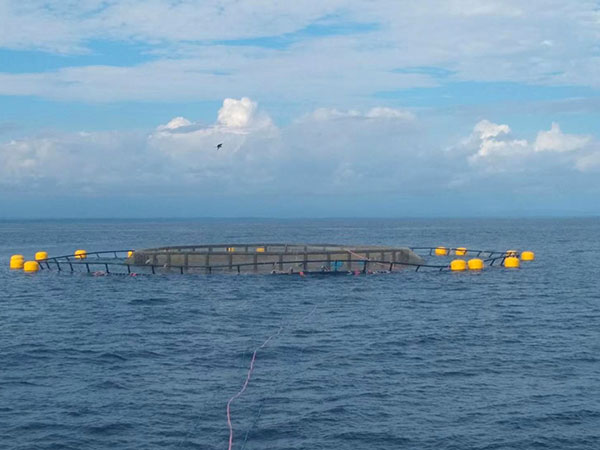
In recent years, the global consumption demand for aquatic products has been rising, and the use of natural resources in the sea may have reached the maximum limit. This means that the growth of aquatic product production in the future will mainly depend on aquaculture. At present, the annual output of global mariculture has reached nearly 200 million tons, and the global mariculture consumption has increased by about 50% in the past decade.
The copper alloy net cage technology, which was born in 1975, uses the natural bacteriostatic property and corrosion resistance of copper to avoid the growth of marine biological attachments in the culture net, thus creating cleaner and healthier conditions for fish culture. At the same time, this technology has greatly reduced the number of times of cleaning and replacing fishing nets, and reduced the losses caused by predator attacks or fish escape.
The existing net cages are generally made of synthetic fiber fishing net materials (including polyethylene fishing net or polyamide fishing net materials). Therefore, the copper net materials for the complete equipment of copper alloy net cages mainly compete with synthetic fiber fishing net materials. The natural bacteriostasis and corrosion resistance of the copper alloy net cage just make up for the deficiency of the traditional net. “Although the one-time investment is high, its income is large and its output value is high. In addition, the labor cost and breeding cost saved are still very worthwhile projects with long-term benefits.” Li Hong, general manager of Qingdao Haosai Machinery Co., Ltd., summarized two advantages of copper alloy net:

First, it can resist strong winds and waves. The copper alloy net cage is made of a special copper alloy produced by a special process. This material determines that the net cage has good plasticity, and will not easily deform under the impact of large wind and waves. Moreover, the effective water body for aquaculture is large, which can increase the number of fish, reduce the impact of wind and waves on the fish, and cause less damage to the fish.
Second, it has natural bacteriostasis. Since copper will release copper ions very slowly after soaking in seawater, slight toxicity can inhibit the growth of algae and greatly reduce the attachments on the net cage. In summer, the temperature is high. If the traditional net cage, algae and other attachments grow rapidly, the net cage should be picked up and cleaned every 1 week. In spring and autumn, it should be cleaned every 2-3 weeks. However, the copper alloy net cage only needs to clean the connecting parts at the bottom of the water by machinery or diver’s high-pressure water gun every year, which can save a lot of labor costs for drying and cleaning the net.
Li Hong said that the copper alloy net have no attachments, which can improve the oxygen content of the cage, and the water flow is better. It can improve the growth speed of fish, reduce the frequency of fish disease, and reduce the indirect harm to human health caused by the use of antibiotics. The data of fish growth study showed that the growth rate of fish in the copper alloy net cage could be increased by 30% under the same conditions, and no copper residue was detected in the fish meat and skin.
In addition, the service life of the copper alloy net cage is about 10 years. Because copper is a non renewable resource, it can be 100% recycled by the high market price after the end of the breeding cycle. However, the general service life of traditional net cages is 3-5 years. After the end of the breeding cycle, they can only be recycled at a low price or treated as waste.
There is a large market for the deep and open sea aquaculture, and the development and promotion of copper alloy fish net will bring more benefit to the environment and the fishery industry.
